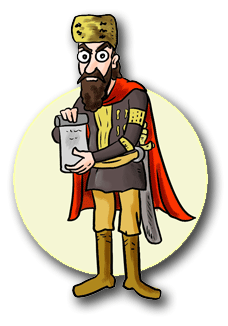Christianity – Its Beginnings in Macedonia
Being one of the first liberal nations with rich traditions; the Macedonians had trouble submitting under Roman authority. Therefore, soon after the appearance of the Christianity in Palestine; sympathizers demanded the arrival of the apostle Paul. However, they were eager to learn the teachings of Jesus from him. In order to find help and needed comfort.
According to Christianity legend, their prayers had been answered
Anyway, the apostle himself received a vision; where he interpreted his required presence in Macedonia. In the year 51, Paul accompanied by Luke, Timothy and Silas arrived in Macedonia. He started preaching the Christianity. At first they went to the city of Philippi.
There, a woman by the name of Lydia; invited them in her humble home. She was a fabric trader and trying to get closer to God she started practicing Jewish rituals. 
When others joined the Christianity in Philippi
The city formed the First Macedonian Christian Municipality. After Paul and the rest of his company left to preach in other regions; Luke remained in Philippi.
Luke wrote his gospel in Philippi. Today, it is a part of the New Testament. Along with one of the pillars of Christianity. From there, Paul, as well as his associates, went to Thessalonica and Berea. These cities accepted them well enough. As Macedonian massively converted to Christianity. So, in a short time Christian municipalities appeared in these cities as well. The apostle Paul founded the Christian church “Golden Gate” in Thessalonica. To popular belief this is the first church in Europe.
However, in order to spread the religion even further, apostle Paul sent three epistles. One was for the Greek Christians in Corinth as well as the other two for the Macedonian Christians. They Macedonians in Thessalonica and Philippi received those two letters. Nonetheless, in these letters, he congratulated them; on accepting the blessing of Jesus. But also warned those who wouldn’t convert on a strict punishment by God. After their time, others continued their work. Therefore, in the year 293 in Lychnidos (today the city of Ohrid) St. Erasmus of Antioch preached the Christianity.
As a matter of fact, he managed to baptize around 20 000 people; in a short amount of time. In his biography it is stated that he performed a great miracle; resurrecting a child.
Nevertheless. in Tiveriopolis (today Strumica) 15 preachers; by origin from Nicaea; preached about the Christianity. They were later recognized as martyrs. Soon the religion spread to Scupi, Heraclea and Stobi. However, it wasn’t easy for preachers to do their job. As the Romans persecuted them.
They purged the converted folk
Later, when Rome started getting weaker and under the pressure of the surrounding nations; the Byzantine Empire arose. Everything went easier when the new Empire recognized the Christianity as a legitimate religion. However, the Roman Emperor Constantine the Great calculated that it would be smart if his country converted to Christendom. Afterwords, in 313 he ordered that every invaded church should be given back. The Christian municipalities developed into episcopal centers. Also, in 325 in Nicaea; the First Christian Ecumenical Council happened. Two bishops from Macedonia attended.
The Scupi’s bishop Dacus and the Stobi’s bishop Budius. In later such gatherings bishops from Heraclea, Lychnidos as well as Bargala. When the Christianity became a state religion in Macedonia, the centers in Thessalonica; Stobi as well as Scupi developed into metropolitan centers.
The earthquake of 518 of Scupi as well as its Archbishop
In 535 the byzantine emperor Justinian I built Justiniana Prima. With a location in his birthplace, Tauresium; it was a city with an episcopal center.
With the “Migration Period” arrived new turbulence. The Germanic tribes from the north were barbaric and with little tolerance to the civilized Christian society on the south. The end of the 6th; as well as the beginning of the 7th century; marks a devastating period. A period when the Early-Christian churches as well as episcopal centers were neglected and destroyed.
Following this period, the new ages bring revival of the Christian worshiping. Such as creating new Christian temples in the bigger cities across Macedonia. With that said, they went by the name “basilicas”. We can easily distinguish them from ordinary churches by their mosaic floors. Later on in the middle ages painters worked on the walls of these basilicas. However, they usually presented portraits of Jesus, the Holy Mother, other saints, martyrs or scenes from the bible. The art work is called fresco or mural.


